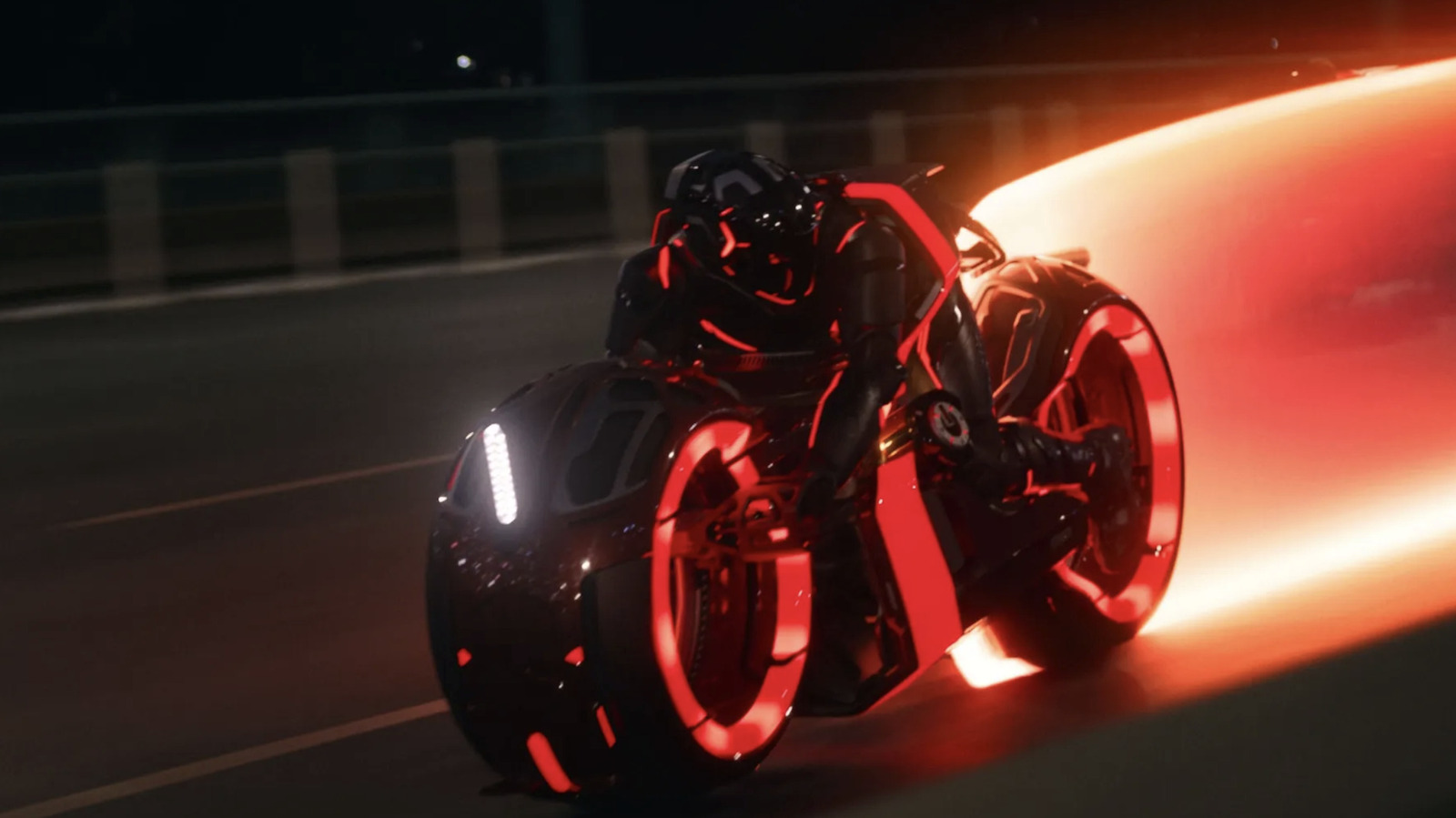
When director and co-writer Steven Lisberger conceived “Tron” in the early 1980s, the appeal of the concept was largely based on visualizing what the world inside a computer system might look like from a program’s perspective. Of course, Lisberger wasn’t trying to be ultra-realistic in his conceptualization, but rather was looking for a way to translate ideas and functions that the general public had barely heard of yet to the screen. As the film’s title indicates, Lisberger came up with an approach that could be called electronic futurism, going so far as to hire futurist artist Syd Mead to help create the environment and objects that exist in the computer world of “Tron.”
Like “The Wizard of Oz,” “Tron” involves a human character pulled into a whole new world, so the places and objects needed to appear totally fantastical, yet also needed to have some basis in physical reality, not just for the character but for the audience to make sense of as well. So, one of the objects that Mead and Lisberger came up with was the Light Cycle, a vehicle which is recognizably based in reality as we know it — it has two wheels and appears to operate similarly to a motorcycle — yet has properties which are uniquely of the world of “Tron.”
The first two “Tron” films allowed the Light Cycle to live in an electronic uncanny valley thanks to the fact that they were largely created in computer graphics and animation. That is to say, no full-size, operational Light Cycle ever existed during the making of “Tron” or “Tron: Legacy.” However, all that changed for the production of the latest film in the series, “Tron: Ares.” In a major first for the decades-old franchise, the Light Cycles seen in the film aren’t solely rendered in a computer, but were built for filming in the real world, with some of them even made operational. This was accomplished by building each Cycle around a Harley-Davidson chassis, allowing the Light Cycles to not just be sat on by the actors but also driven around, too. The result is a mash-up between the electronic futurism of the computer world and our real world, which is exactly what “Tron: Ares” is all about.
Ever since a follow-up to “Tron: Legacy” was in development, the various writers and producers behind several iterations of the project had the idea to pull a James Cameron-style reversal on the film’s premise. Which means that where the first two “Tron” films involve humans being sucked into the computer world, the next film would reverse that process, and bring the electronic denizens and their environment into our reality. As the early trailers and first looks demonstrate, “Tron: Ares” finally achieves this goal, presenting some breathtaking visual moments where a giant Recognizer or other Grid vehicles turn up in the middle of some human city streets. In addition to this, we get glimpses of Ares (Jared Leto) and his fellow Programs racing Light Cycles down real roads. It turns out that this visual is something that “Ares” director Joachim Rønning has wanted to see for quite a while, enough that it caused him to take the helm of “Ares” itself. As Rønning told SFX Magazine in an article about the film in their latest issue, this concept represents the next step for the franchise:
“That’s what drew me into the project — the concept of these assets coming into the real world. I hadn’t seen that before in this franchise. That felt original and big, like a great next natural step in the evolution of ‘Tron.’ It was a tremendous undertaking. We closed down Vancouver for six weeks of nights and tore it apart, and as much as possible was real. You can feel that when you watch the film — it feels next level.”
As Rønning alludes to, the “Tron” films are no mere oversaturated IP, but are instead films that double as watershed moments in visual effects history. The original “Tron” was one of the first films to make extensive use of computer-generated imagery, especially in the case of those Light Cycles zooming around on the Game Grid. “Tron: Legacy” was the unveiling of digital de-aging technology, something which was used to make Jeff Bridges’ CLU look like the young Bridges did in the first “Tron.” Thus, “Ares” feels like a bit of a closed circle; instead of imagery generated inside a computer made to look real, the film is taking a fantasy object and bringing it into our reality. “Tron” has a history with art imitating life and vice versa, and it seems like whatever else “Ares” is, it’s going to be no slouch in that department.



